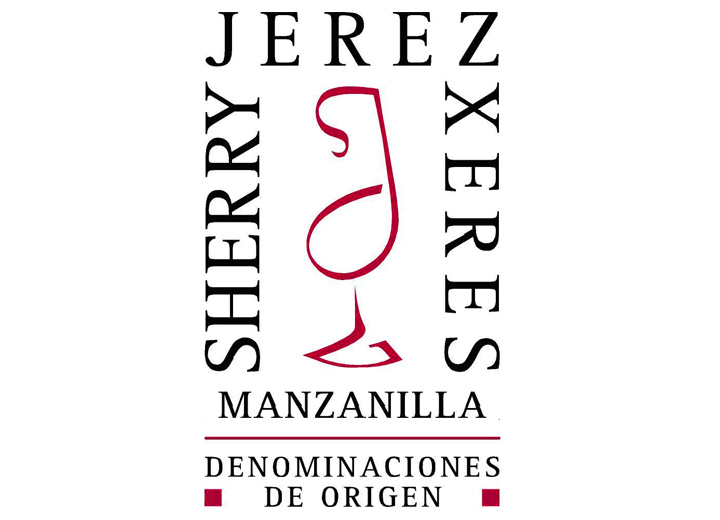

Jerez - Manzanilla Sanlúcar de Barrameda D.O. / D.O.P.
Classification of young wine vintages
See detail of Jerez - Manzanilla Sanlúcar de Barrameda D.O. / D.O.P.
DATA
Nº of hectares under vine: 7,082.87 - Nº of vine growers: 2,203 - Nº of wineries: 81 - Harvest 21: Very Good - Production 21: 39,828,500 liters. - Marketing: 67% Domestic - 33% International.
SITUATION
In the province of Cádiz. The production area includes the municipalities of Jerez de la Frontera, El Puerto de Santa María, Chipiona, Trebujena, Rota, Puerto Real, Chiclana de la Frontera and some plots in Lebrija.
CLIMATE
Warm with Atlantic influences. The westerly winds play an important role, as they provide humidity and act as a moderating element. The average annual temperature is 17.5ºC and the rainfall is 600 mm. per year.
SOILS
The soils, known as "albarizas", are a key quality factor. Almost white in color, they are rich in calcium carbonate, clay and silica. They are excellent for retaining humidity and storing water from winter rains in preparation for the dry summer months. They also determine what is known as "Jerez superior". These soils are found in Jerez de la Frontera, Puerto de Santa María, Sanlúcar de Barrameda and some areas of Trebujena. The rest of the soils, known as "Zona", are mud and sand.
VARIETIES
White: palomino (90%), pedro ximénez, muscatel, palomino fino, palomino de Jerez.
GENERAL CHARACTERISTICS OF THE WINES
MANZANILLA AND FINO
They have a straw yellow color. They are characterized by their saline nuances, typical of the biological aging under the veil in flor (more pronounced in the case of manzanilla), and by the bitter traits conferred by the aging.
OLOROSO
With a completely oxidative aging, the range can be varied, depending on the greater or lesser scale shift (i.e. the number of sacas of solera wine for subsequent bottling) and, consequently, the greater or lesser refreshment with wine without aging by the first criadera. In the very old wines it is usual to soften them with a Pedro Ximénez mistela, which provides notes of sweetness to mitigate the bitter tannins of the oak.
PEDRO XIMENEZ
They are characterized by a marked taste of raisins, although there is no shortage of those associated with a small percentage of oloroso to lessen the pastiness. In the mouth they are tasty and sweet.
CREAM
They combine the bitter notes of the oloroso with the toasted nuances and sweetness of the pedro ximénez.
AMONTILLADOS
These are fine wines that lose their flor veil and end up oxidizing. Wines with sharp and saline aromas and a more oily palate that absorb the toasted and complex nuances of the barrel.
CUT PALOS
These wines are the result of chance or nature, not always motivated by the hand of man. They combine the finesse of an amontillado and the structure of an oloroso on the palate.
Latest tastings in the area

Register for free and access our content
- Discover for free over 12,000 wines reviewed every year
- Find the best bars and restaurants where wine is pampered.
- Receive every week our newsletter with our wine of the week, the trendiest bar and everything about the world of wine.
Already have an account in Peñín?
Login with my accountWineries list
- Delgado Zuleta
- Bodegas Dios Baco
- Lustau
- Bodegas Gutiérrez Colosía
- Bodegas La Cigarrera
- Bodegas Osborne
- Bodegas Tradición
- Carbajo Ruiz
- Bodegas 501 del Puerto
- Bodegas César Florido
- El Maestro Sierra
- La Guita
- Bodegas Grant
- Sandeman Jerez
- Manuel Aragón
- Romate
- Bodegas Fundador
- Bodegas Y Viñedos Diez Merito
- Valdespino
- Marqués del Real Tesoro
- Hidalgo
- Bodegas Hidalgo-La Gitana
- Bodegas Barbadillo
- Bodegas Barón
- Bodegas Faustino González
- Garvey
- González Byass Jerez
- Bodegas Argüeso
- Herederos de Nicolás Martín S.L.
- Bodegas Almocadén S.A.
- Bodegas Caballero
- Bodegas Pedro Romero
- Álvaro Domecq
- Bodegas Williams & Humbert S.A.
- Bodegas J. Ferris M.
- Fernando de Castilla
- Bodegas Valdivia
- Aecovi-Jerez
- Equipo Navazos
- Vinos de Sacristía AB
- Alcampo
- Bodegas Barrero
- Agroalimentaria Virgen del Rocío
- Portales Pérez
- Bodegas Arfe
- Carrefour
- La Alacena de Carlos Herrera
- Bodegas Juan Piñero
- Zoilo Ruiz-Mateos
- Bodegas Urium
- Bodega de los Infantes Orleans Borbón
- Bodegas Teresa Rivero
- Bodegas Yuste
- Bodega Cooperativa Católico Agrícola
- Alexander Jules
- Lacum Wines
- Bodega Luis Pérez
- Altanza
- Balandro Vinos (Las Botas)
- Viña Callejuela
- Cayetano del Pino y Cía.
- Bodegas Fernández-Gao 1750
- Lidl
- Altanza - Colección R. Amillo
- Adegas Morgadío
- R & G Rolland Galarreta
- Coop. Albarizas de Trebujena S,C,A,
- Bodega San Francisco Javier
- Las Bovedas de Esporsil
- Bodegas Primitivo Collantes
- De la Riva
- Bodegas del Río
- Pepe Rodríguez de Vera
- Cooperativa Agrícola Virgen de Palomares S.C.A.
- Bodegas José Mellado Martin

 Log in
Log in


